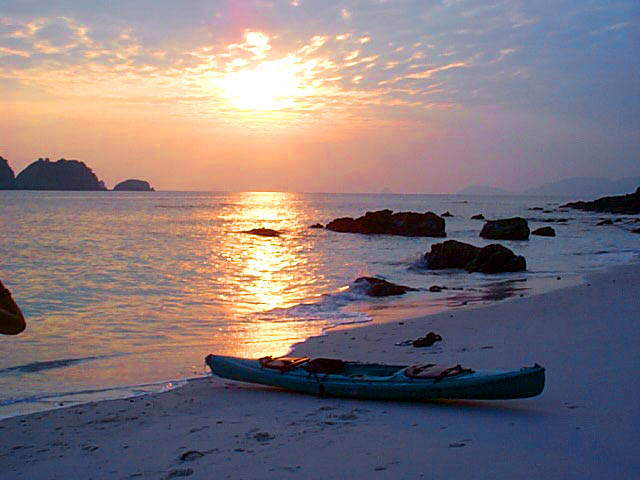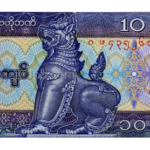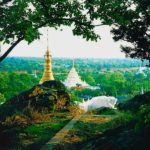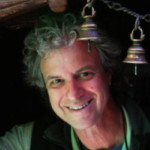The Mergui has some 800 (largely unmapped) islands, a population of elusive sea gypsies (the Moken), and, because it belongs to repressive Myanmar, almost no visitors.
By Rolf Potts
As I glide in a kayak through a narrow channel in the Mergui Archipelago, off the southern coast of Myanmar, I almost overlook the small clearing at the edge of Wa Ale Island’s tangled jungle. I’m scanning the trees for crab-eating macaques — the shy, brownish monkeys that haunt this shore in the evenings — when, out of the corner of my eye, I spot the collapsed huts. Realizing that I’ve stumbled across an abandoned sea gypsy camp, I splash ashore to investigate.
In two days of kayaking through these remote islands, I’ve spotted sea eagles and tree pythons; I’ve paddled alongside smooth-coated sea otters and seen sand-markings left by sea turtles and monitor lizards; I’ve glided through fluttery clouds of yellow butterflies and watched sunsets turn the Andaman Sea cotton-candy pink — but I have yet to see any of the nomadic humans who’ve made these islands their home for the past few centuries.
These sea gypsies, the Moken, live entirely on their boats for six months of the year. They are one of the last peoples of the earth to retain their pre-historical culture. Not only have they rejected the trappings of modernity, these sea nomads have over the years rejected agriculture, Islam, Christianity, Buddhism, and even net-fishing. Spearing or foraging their food from the sea, they live and die on small, hand-made boats that ply the Mergui Archipelago, preferring isolation to interaction with their Burmese, Thai, Malayan, and Indian neighbors. Because they don’t save for the future — and are neither violent nor greedy nor materialistic — the Moken have lived as victims for most of their history. Even the name they’ve given themselves evokes isolation and fatalism: directly translated, Moken means “Sea Drowned”.
I hike into the clearing and pick through the abandoned Moken camp as carefully as if it were a crime scene. From the looks of it, the sea gypsies who camped here spent most of their time resting and eating: Piles of seashells sit next to the blackened stones of fire-pits; odd plastic sweets wrappers flit about in the sand. Half-smoked cigarettes — leaf tobacco rolled in newsprint — line edges of the collapsed huts, suggesting that the Moken spent a fair amount of time here waiting out rainstorms.
But what is remarkable about this sea gypsy garbage is that there’s so little of it. On the opposite side of Wa Ale Island, along beaches more exposed to the currents of the Indian Ocean, one can find all manner of refuse from distant civilizations: “Rejoice” anti-dandruff shampoo bottles from Thailand; aerosol cans of “Hit” insect fogger from Indonesia; plastic bottles of “Golden Mountain” mineral water from the Myanmar mainland; empty cans of “Full Cream Vitamin-Enriched Milk” from New Zealand.
That such detritus is the only evidence of the outside world in the Mergui Archipelago is something of a fluke. This group of 800 islands off the Myanmar coast borders one of Thailand’s most popular tourist areas: The Similan islands, which are a geophysical extension of the Mergui Archipelago, see 80 dive-boats a week during tourist high season, and the island of Phuket, a few more hours to the south, hosts 3 million tourists a year. By contrast, the entire 10,000 square-mile expanse of the Mergui Archipelago has remained largely uninhabited—mainly due to 50 years of political isolation at the hands of the Myanmar government.
Indeed, no other group of islands in such close proximity to a mass-tourism destination has remained so pristine and so isolated. But now that Myanmar’s military junta is showing tentative signs of openness, particularly with the dramatic May release of pro-democracy dissident Aung San Suu Kyi, the Mergui Archipelago stands to become one of the most important — and most vulnerable — untapped tourist areas in the world.
When the daylight begins to fade, I paddle out of the channel and head for a small safari camp on the south end of Wa Ale Island, where I’ve been staying for the past two nights. Operated by South East Asia Liveaboards (SEAL), a Phuket-based adventure travel company, this camp is the first land-based tourist-venture in the archipelago since the area was opened to dive-boats in 1997. For now, the camp consists of little more than a half-dozen nylon tents pitched in the grass behind a sandy beach. The open-air kitchen, a chemical toilet, and tree-mounted shower stall keep the place from feeling too primitive. Should kayak camps and adventure cruises in the archipelago prove successful, SEAL will expand this safari camp into a self-contained eco-resort, complete with open-walled thatch villas and air-conditioned sleeping salas.
As I settle in for a late dinner in the mess tent, Graham Frost, the easygoing 38 year-old Brit who owns SEAL, brings in an admiralty chart of the islands. Since the sprawling archipelago has only been accessible to outsiders for five years, comprehensive information about it simply does not exist. Tomorrow morning, Frost will lead us northward in search of new destinations. Apart from what Frost has found on previous exploratory trips, the only clues we have to what awaits us come from shipping maps, colonial-era navigation pilot guidebooks, and published journals from the merchants and missionaries who came here in the years before World War II.
“There’s an appeal in going to a place when you’re not sure what’s out there,” Frost says as he unrolls the chart. Indeed, just looking at the scattered islands on the map is enough to give me a buzz of anticipation. Because the region has been off-limits since before the advent of scuba diving, electronic depth sounders, and global positioning satellites, many of its mysteries have yet to be solved. The wreck of the Harvey Adamson, a British steamer that disappeared with 200 passengers en route to the ancient trading town of Myiek in 1947, has never been found. A WWII-era Japanese airfield on Lampi Island has never been surveyed. The rocky bays of Tenasary Island, which sheltered generations of pirates who preyed on ships bound for India, have never been dived for scuttled ships or jettisoned caches of Ming porcelain (though local fishermen have been known to turn up such relics in their nets).
Since we can’t be too ambitious on a mere 4-day expedition, Frost settles on one major goal: a steep, limestone island said to contain a saltwater lagoon that can only be entered through a cave at low tide. Called “Elephant Island” in old British travel accounts, it is not listed by name on our admiralty chart. But the pilot’s guide mentions a string of limestone karsts near Paun Daung Island, and this is where we will center our search as we cruise north toward Myeik.
After Frost details the sundry plans of the expedition, I walk out to the darkened beach. In what is becoming a nightly ritual for me, I lie down in the sand, soaking in a peculiar feeling of isolation: the world reduced to bright stars, silent jungle, and the soothing rumble of waves.
We leave Wa Ale Island in Seal One, SEAL’s semi-rigid inflatable speedboat, after breakfast the next morning. There are seven of us on board, including porters, two photographers, and a Burmese interpreter. Our destination for the first day is Pu Nala Island, home to Makyunn Galet village, where the Myanmar government has attempted to settle a community of Moken sea gypsies. Forested islands pepper the horizon, their granite shores and sandy beaches just peeking out beneath tangled green jungle. A flock of black hornbills swoops overhead. Although I enjoyed my initial days of kayaking and swimming (the primary activities at the Wa Ale safari camp), I feel like my Mergui trip is just now beginning.
White-sand beaches and hidden lagoons aside, part of the selfish romanticism that brought me here is the possibility of making contact with the Moken, one of the last purely nomadic peoples on earth. When Seal One arrives at Pu Nala Island at midday and drops anchor offshore, Frost warns me that the “sea gypsy village” won’t exactly be an examplar of Moken authenticity. “Makyunn Galet is basically a government creation,” he says. “By definition, sea gypsies don’t keep permanent villages.”
As I unload my kayak and paddle toward the shore, I can already see the influence of Burma in the Buddhist pagoda perched above the stilt-houses and coconut palms at the far end of the beach. Originally set up as a safe haven for the Moken, Makyunn Galet village has a hospital, a school, a fuel depot (diesel boat motors are one of the few concessions the Moken have made to technology), and several shops where the sea gypsies can trade shells and sea cucumbers for rice and tools. However, we don’t find many sea gypsies in the village. Burmese women and children, the families of fishermen, greet us brightly as we walk up the beach; Burmese-style craps tables and a karaoke machine (which runs on a diesel generator) adorn the town center.
Graham suggests we go to the monastery and pay a visit to U Kay Masala, the tired-eyed, sexagenarian monk who oversees the village. As is common in Buddhist Myanmar, U Kay took up the monkhood after a long life in mainstream society. When we enter the airy, hardwood monastery hall, I notice a picture of the monk as a young soldier, with medals on his chest and hair on his head. It’s because of this old military connection, Graham tells me, that U Kay was chosen to supervise the Moken of Makyunn Galet. In an area that is lawless because of its isolation, the soldier-monk holds legal and moral authority. As the orange-robed old gentleman motions for us to sit, I spot a puffy bullet scar on his left calf.
“Over 400 sea gypsies live here during the rainy season,” he tells us through our interpreter. “Now that it’s dry, most of them are out living on their boats. We try to get them to at least leave their children to attend school, but they aren’t interested. So, while the sea gypsies are gone, Burmese fishermen come here and move into their houses.”
“Isn’t that illegal?” I ask.
The monk gives me a tired look. “It’s illegal, but it’s hard to stop. A few months ago, there were 400 Burmese living here. The village makes a good base for fishing, but some of these people are timber poachers and dynamite-fishermen. We finally made most of them leave, but some of them make decent money — and that gives them political clout.”
“Is this a problem for the sea gypsies?”
“Sure it’s a problem. The Burmese move into their houses and cut into their sea cucumber trade. Whenever I act to protect the interests of the sea gypsies, the Burmese complain. They think this village is theirs. And if it wasn’t for me, it would be. Whenever I go to visit my home in Myeik, all the sea gypsies leave the village — even in the rainy season. They don’t feel safe without me.”
“Do you think that will ever change?”
U Kay Masala shakes his head grimly. “I’ve been here since 1995, and each year the politics of protecting the sea gypsies gets more complicated. There’s simply too much money to be made selling timber and shark’s fins to the Thais and the Chinese. Before long, I will retire to Myeik for good. And when that happens, I fear the sea gypsies will go back to their old life in the islands.”
As the monk talks, I realize that the Mergui Archipelago, while islolated, is not a vacuum. Before I came here, I figured the Moken would make a good metaphor for how this place stands to change once tourists arrive. But the sea gypsies are already dealing with outside influences — not the least of which is the greedy pull of regional markets. If there’s a reason the Moken have remained so stubbornly nomadic, it’s that this sprawling archipelago allows them to disappear on their own terms. Should these islands become saturated with tourists, this survival strategy might no longer be an option.
A day after visiting Makyunn Galet, we continue northward in Seal One. Past Lampi, a fishhook-shaped island roughly the size of Singapore, we enter the open water of Forrest Strait, which signals our transition into the upper half of the archipelago. We hope to explore the limestone karsts known as the Marble Isles, which lie just east of Paun Daung Island’s sprawling shoreline, before nightfall. There, we will search for the hidden tidal lagoon in what was once called Elephant Island.
Should this lagoon live up to a nineteenth-century British civil servant’s glowing review (“…A magic scene from a fairyland: a snow-white ring, with an opening like the crater of a volcano, in the midst of a purple lake…”), it should make a fine addition to SEAL’s cruise and kayak trips. Not to mention a marquee tourist attraction, should Phuket-style mass tourism make its way this far north.
Tourism in Phuket grew from almost no visitors in the early 1960s to 2.5 million yearly by 1996, with attendant water shortages, garbage accumulation, and soil degradation. It was during the nineties that Phuket-based dive operators like Graham Frost began to look north to Myanmar. “Look at a map of the Andaman Sea,” he tells me as he steers Seal One north through the choppy water of Forrest Strait. “Count the number of islands there. In Thailand, there are maybe fifteen altogether. In Myanmar you have 800. This was the obvious place into which to expand.”
In late 1996 Frost received permission from Rangoon to make the first exploratory trips to the Mergui islands. By early 2001, eight Phuket dive operators were making regular forays into the archipelago during the tourist high season — and three times that number had been granted licenses for future trips.
Despite the obvious appeal of dry-land activities in the islands (the Mergui Archipelago has at least five islands that compare in size to Phuket), SEAL is the first company to offer them. Frost tells me that the lack of infrastructure in Myanmar, combined with the uncertainty of doing business in an untested area, keeps his competitors at bay for the time being.
“The Thai tourist industry has a very narrow and formulaic view of tourism,” he says. “Nobody will try anything new until it’s a proven success. If what we’re doing here proves successful, you’ll probably see a lot more attention focused on this area.”
I ask him if that’s an unsettling thought, given the overdevelopment in Thailand. “My understanding since day one is that the Myanmar government is open to development of the islands, but in a very up-market fashion,” Frost replies. “Development along the lines of the Maldives, with different ventures leasing their own islands. That will control the number of visitors and ease the impact on the environment. We’re also lobbying to make this a marine and forest reserve area, to protect the reefs and forests from dynamite-fishing and illegal logging. In this way, we’re hoping that tourism will actually help preserve the environment.”
Another reason why Western tour companies haven’t moved into the Mergui islands is Myanmar’s military government, which is notorious for human rights abuses. Even after her release from house arrest, Nobel Laureate Aung San Suu Kyi has continued to urge tourists to boycott Myanmar as long as the junta retains a monopoly on power.
When I confront Frost with this issue, he shrugs it off. “You have different schools of thought on whether you’re harming or helping people by coming here,” he says. “Aung San Suu Kyi has spoken out against coming to Myanmar, but on the other hand you have people like the Dalai Lama who are saying ‘come and visit my country, come and see what is going on.’ It’s definitely a human rights issue, but I think it’s blown out of proportion for political reasons. We’re of the opinion that links to the outside are more helpful to the people of Myanmar than are British or American sanctions.”
As Seal One cruises northward, we come across a government-sponsored pearling operation on a small island just beyond Forrest Strait. Pearling is a Moken specialty (sea gypsies are known for their ability to reach dangerous depths with little more than a rock anchor and a breath of air), but the pearl divers we find are Burmese teenagers outfitted in ancient brass-helmet diving suits. Looking like something out of 20,000 Leagues Under the Sea, they descend on mossy ropes as red rubber air-hoses spool out from the battered wooden boats.
We hang around and observe the spectacle, perhaps longer than we should, and by the time we pile back into Seal One, we are pressed for time in reaching the Marble Isles. As we motor north toward the limestone outcrops, Frost and I scour the old pilot guidebook for clues as to where Elephant Island might lie. He seems to think an island listed on the chart as “Hngetthaik Taung” is our best bet. Given the waning daylight, I hope he’s right — although I can’t imagine why anyone would rename Elephant Island “Hngetthaik Taung.”
The Marble Isles are hard to miss. Unlike the rounded, jungle-covered granite islands that dominate the archipelago, these dozen or so limestone islands rise dramatically out of the water — as steep and stunning as their storied geological cousins in Guilin, China, and Halong Bay, Vietnam. Bonsai-like Cycad palms — 120 million year-old remnants of the dinosaur age — grow out horizontally from the sheer cliffs; clusters of cactus-like diamond club grow just above the water. Anchoring Seal One in the deep blue bay of Hngetthaik Taung, we unload the kayaks and paddle off to look for the hidden lagoon.
At first, our explorations are inconclusive. We do find a wide cave full of barnacle-encrusted stalactites at the back of the bay, but it dead-ends after 20 feet. Since the tide is up, this could indeed be the cave that leads into the Elephant Island lagoon. I backtrack from the cave and paddle along the sheer bayside cliff until I spot a low notch in the ridge thirty feet above the waterline. I climb out of the kayak and begin to scale the dimpled rock wall. Frost paddles over and follows suit. After a few precarious minutes on the cliff face, I finally top off the ridge and peer down at the other side.
There, curving out from a narrow cove, is a deep-green lagoon surrounded by a jagged ring of white cliffs. Scrambling down the gentle backslope of the ridge, I throw off my shirt and dive into the water, then swim slowly toward the center of the volcano-like lake, listening to the birdcalls echo off 300-foot high walls. Even though Frost is a few minutes behind me, even though I realize Burmese fishermen must know this place well, I feel as if I’m discovering this place for the first time. Treading water, I turn to take in 360 degrees of rock, water, and sky. Fan-leafed palms fringe the tops of the cliffs; Edible-nest swiftlets — small, quick birds that make their nests in caves — dart over slight ripples on the water’s surface.
I wonder if it’s possible to separate the joy of being here from the nagging fear that this place may soon change. Would I enjoy this moment as much if the lagoon were full of pontoon boats, ringed with refreshment stands and guidebook-clutching tourists? To even ask this question involves a kind of pessimism. It’s as if there’s no longer a psychic distinction between what can and cannot be accessed by the masses. Increasingly, we just assume that pristine isolation is a perishable commodity — a fresh new variation of a product that has a dubious shelf life.
While tourism creeps its way north into the Mergui Archipelago from Thailand, the influence of Burma has steadily made its way south into Moken waters. Although Paun Daung Island is historically a Moken “mother island” (where the sea gypsies return during the wet season), it now bears the distinctive mark of Burmese pagodas and fishermen’s settlements. We stop for the night in Kyat Kyunn, a fishing village of 200 houses perched on wooden pilings over a mangrove swamp, and the villagers tell us that they haven’t seen any Moken in the area for five years.
We’ve had the good fortune to arrive in the middle of a Buddhist full-moon festival. Outside the local pagoda, a-nyeint pwe performers (traditional Burmese vaudevillians who travel from town to town) croon, spoof, and ham it up for a crowd of onlookers. Old women shoot craps and old men swill whiskey along the central boardwalk; teenage boys rubberneck at the town beauties, who’ve dolled themselves up in red lipstick and patterned white thanaka (a local cosmetic paste made from tree bark). The festive mood here is contagious, and the seven of us from Seal One enjoy a kind of celebrity status as we stroll the boardwalks. In keeping with a-nyeint pwe tradition, the revelry lasts until dawn. We depart on our four-hour haul to Myeik at mid-morning, happy and exhausted.
Myeik (also known as Mergui Town), the only sizeable town in the entire archipelago, sits on a mangrove island just off the Myanmar mainland, well south of Myanmar’s tourist circuit, which is centered along the Rangoon-Bagan-Mandalay axis. Formerly one of the most important trade ports on the Indian Ocean rim, Myeik is now a sleepy coastal backwater. Since Frost is interested in turning one of Myeik’s stately old colonial homes into a SEAL guesthouse, we spend two nights in the town. With no sea gypsies or hidden lagoons to give me a sense of purpose, I wander through the markets and monasteries of the ancient port.
If there was ever a historical golden age here, it started 500 years ago, when Myeik fell under the influence of a Siamese empire based in Ayuthaya (50 miles north of the present site of Bangkok). Since the Straits of Malacca further south were notorious for pirates and poor trade winds, valuable commodities such as silk, porcelain, and copper were transported overland between Ayuthaya and Myeik, making Siam a major player in world commerce. Courted for the next 300 years by merchants from places as far away as Japan and Holland, Ayuthaya grew into one of the most cosmopolitan cities in Asia — and Myeik became an important lynchpin along the India-China trade route. For three centuries, Myeik attracted a vibrant array of Chinese, Indian, Arab, and Portuguese merchant communities.
Then, in 1765, a Burmese army swooped down from the north, slaughtering Myeik’s Siamese administrators and annexing the region. Cut off from Ayuthaya, Myeik fell into decline. By the mid-nineteenth century, the area was under British control, steamships were cruising unmolested through the Straits of Malacca, and Singapore had become the uncontested fulcrum of India-China trade. Bypassed by merchant ships, Myeik deteriorated into an obscure colonial outpost, and the Mergui Archipelago reverted to a quiet home for wandering Moken boats.
In the streets of Myeik, pre-teen boy-monks in red-brown robes still carry their Buddhist begging-bowls through town at dawn; Tamil Hindu women still turn up in the market in bright pink saris; bearded Muslim men still stroll the Islamic Quarter in skullcaps and djellabas; Asian-featured de Silvas and de Castros still attend services at the Portuguese Catholic church. An impressive golden pagoda, Theindawgyi Paya, dominates the ridge overlooking the harbor, and Portuguese and British colonial structures crumble alongside Burmese vernacular buildings in the center of town. In the mornings and evenings, longyi-clad citizens gather to bathe at street-corner wells; oil-lamps flicker inside wooden houses at night.
On our way back to Wal Ale Island, I lobby—hard—to search for Moken flotillas in an outer set of islands. Frost vetoes my requests: Clients await him back at the safari camp. As we speed over the waves, attempting to make the return trip in a single day, I wonder why the Moken hold so much fascination for me. I suspect that I’ve fallen into that much-analyzed travelers’ cliché — the nostalgic yearning to witness a way of life that I idealize because I was born too late to really know it. As I wade ashore on Wa Ale in the early evening, one of the new kayaking clients greets me and casually mentions that he saw a small flotilla of sea gypsies on Kanzagyi (Wa Ale’s sister island) earlier in the day. Wasting no time, I splash back out to Seal One and bully Graham into taking me there.
Since the sea gypsies are known to flee at the sound of a boat motor, we anchor Seal One off the Kanzagyi coast and unload the kayaks into the water. As I paddle in to shore, I spot a cluster of stilted, chest-high structures similar to the collapsed thatch huts I found along the channel several days ago. Then, I notice a couple of brown-skinned children digging for sandworms in the mud of a broad tidal flat.
Not sure of what else to do, I beach my kayak and start towards the huts. The children give me a cursory glance before returning to their work. Beyond them, a wide-keeled Moken boat sits slightly askew in the shallow water. Though this black-hulled craft sports a diesel engine, curved notches in the bow and stern (symbolizing a mouth and anus) hold true to traditional animist detailing.
When I arrive at the beachside encampment, a couple of yellow dogs jog up and sniff at my ankles. A man who looks to be in his early twenties stumbles out from a makeshift kitchen area and offers me a tin cup full of strong-smelling rice whiskey. He’s wearing a tattered pair of shorts, and his skin is covered with a wormy-looking case of dermatitis. Declining the whiskey, I force a smile over at a half-dozen adults and children who squat next to a cooking fire. Everyone is dressed in Burmese fashion — longyis or shorts under t-shirts. Apart from their coffee-black skin and a reddish tint to the children’s hair, the Moken don’t look radically different from their Burmese or Thai neighbors. The one striking distinction, however, is that almost all the sea gypsies look sick: Most of the children are covered in rashes and insect bites, many of the adults have feverish, yellow-tinted eyes.
When Frost and the others show up, we attempt conversation. Though most of the sea gypsies can only speak in their own, Malay-influenced tongue, our interpreter locates a Moken teen who speaks some Burmese. A dozen or so sea gypsies gather as my questions get translated from English to Burmese to Moken and back.
Apparently, these folks come from a Moken flotilla that’s currently anchored at nearby Clara Island. Since their boat engine broke down in open water several days ago, they paddled to Kanzagyi to set up a temporary camp. “There’s a good source of fresh water on this island,” an older man tells me. “It’s common for us to stop here during the dry season.”
“Don’t you ever stop at Makynn Galet village?”
“Sometimes. But there are too many Burmese there now. It’s hard to find food or gather sea cucumbers in that area, because the Burmese harvest them first.”
“Is there enough food for you on this island?”
“There’s usually plenty to eat here,” the old man says, gesturing at the tidal flat. “And sometimes we dive for shells in the deeper water.”
“All our shells were stolen two days ago,” interjects the young man with the skin rash.
A tough-looking Moken man in a goatee and a soiled “Honda Racing Team” jacket clarifies. “Some fishermen raided the camp when the men were gone two days ago. Three Burmese and a Karen. They threatened the women and stole the shells, our rice, and all the alcohol that wasn’t hidden.”
“Can you report these men to the authorities?”
The man scoffs. “We can report it to the army after we get back to Clara Island, but that won’t help. They’ll just ask us to make a report, and none of us can write Burmese.”
“Will they let you write it in Moken?”
The sea gypsies stare at me in silence. I’ve forgotten that the Moken have never used a written language. Missionaries have transliterated their tongue before, but the sea gypsies showed little interest in its written form.
Taking us to the cooking area, the nomads offer up boiled mollusks and talk about the trials and difficulties of the last few days. Simply listening to such details is enough to temper my sentimental view of their lives.
Ironically, the most significant threat the arrival of tourism poses to Moken culture is the increased exposure it will give them to literacy, medicine, and industry. To misinterpret this dynamic is to misunderstand the Moken way of seeing the world.
As gathering darkness sends us back to the kayaks and out to sea, I’m tempted to ask Graham to leave me at the sea gypsy camp for a night. It’s a fanciful notion — sleeping in a thatch hut and waking at dawn to gather seashells with the nomads — but I finally decide against it.
After all, the Moken never invited me to stay.
This article originally appeared in the July 2002 issue of Conde Nast Traveler.






